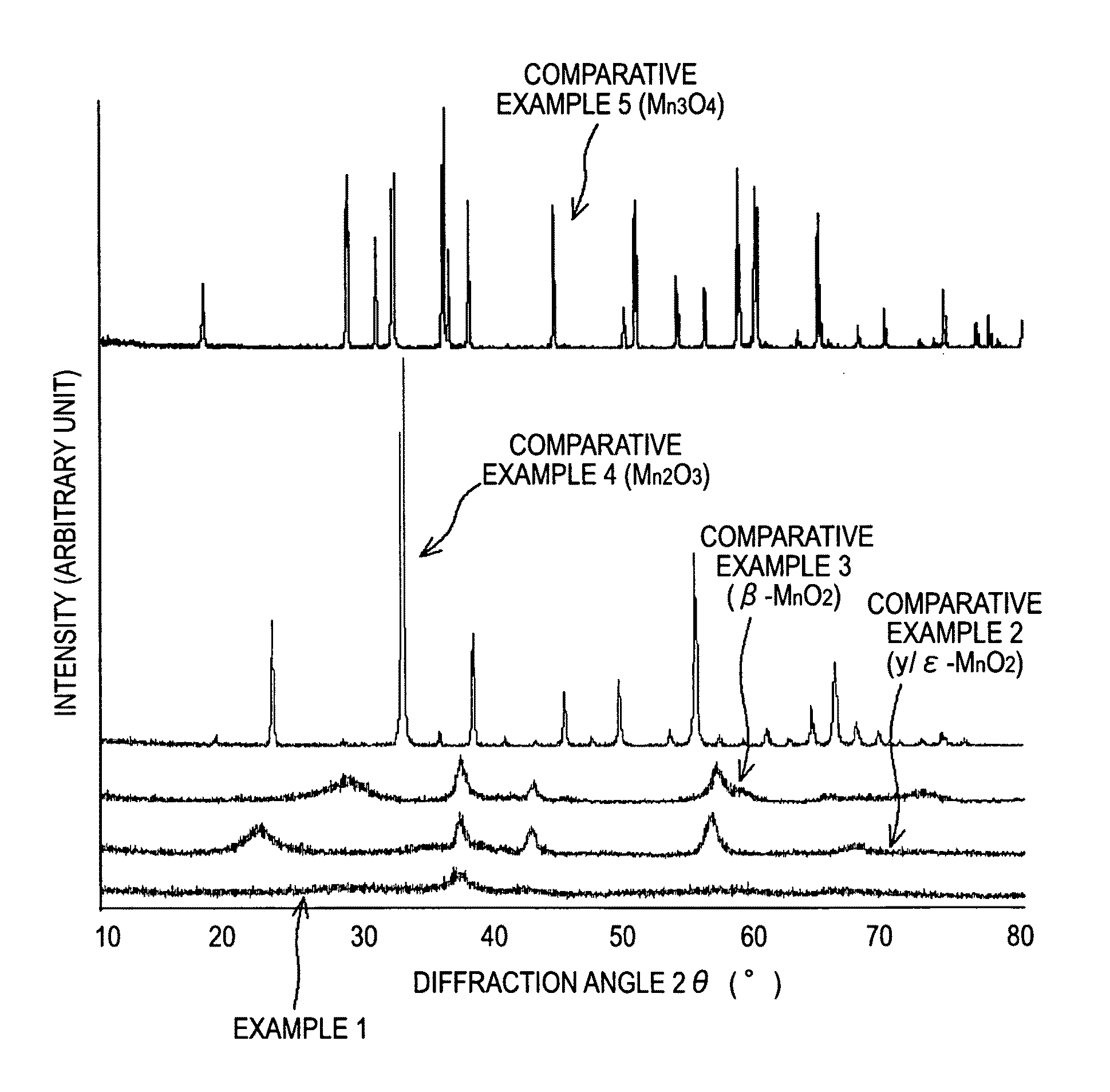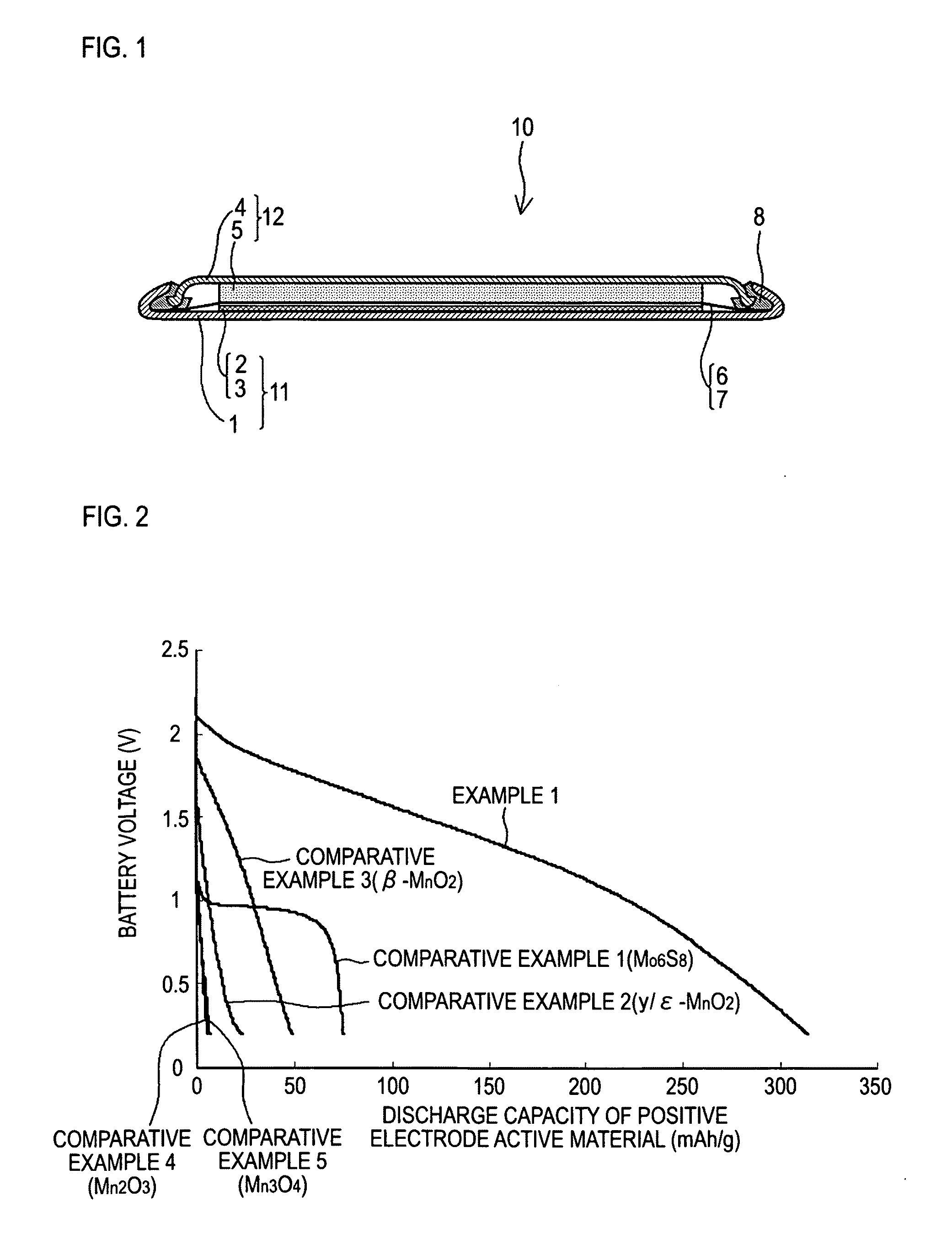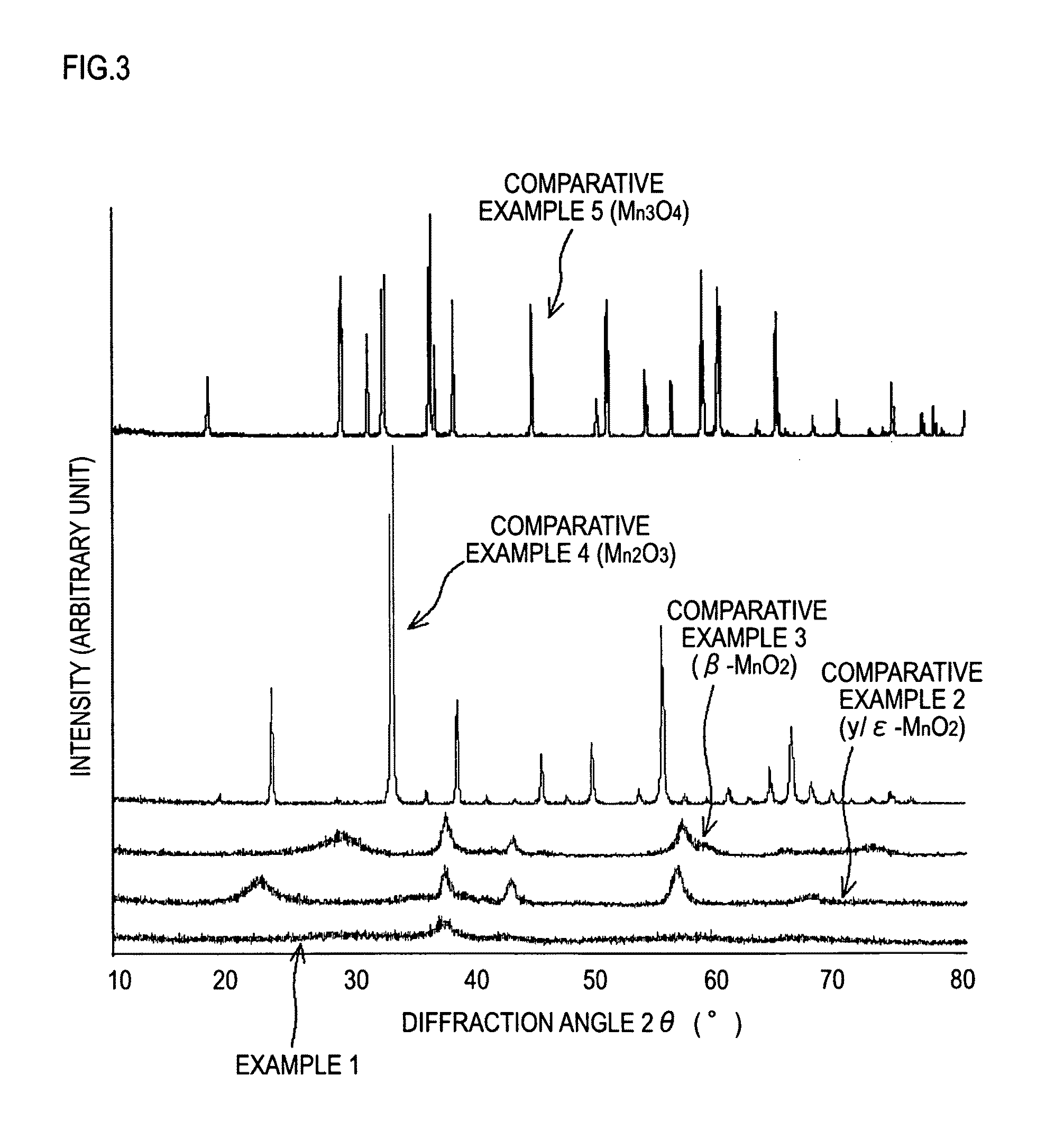Positive electrode active material, method for producing the same, and electrochemical device
a technology of active materials and positive electrodes, applied in sustainable manufacturing/processing, non-aqueous electrolyte cells, manganates/permanentates, etc., can solve the problems of limited resources and high cost of lithium, the inability of mgsup>2+/sup> to occupy all of the twelve sites at the same time, and the safety of lithium secondary batteries. , to achieve the effect of high electromotive force, high energy capacity and high ionization
- Summary
- Abstract
- Description
- Claims
- Application Information
AI Technical Summary
Benefits of technology
Problems solved by technology
Method used
Image
Examples
example 1
[0058]In Example 1, a coin-cell magnesium battery 10 as explained in the embodiment with reference to FIG. 1 was produced. Magnesium metal was used as the negative electrode active material, and the manganese oxide according to the invention was used as the positive electrode active material. The performance of the manganese oxide of the invention as a positive electrode active material was examined.
2 and Negative Electrode Active Material 5>
[0059]First, 2 g of potassium permanganates was added to 50 ml of hydrochloric acid having a concentration 4 mol / l. The mixture was stirred for 15 minutes at room temperature, and then allowed to stand. Subsequently, the resulting precipitate was washed thoroughly with water, and then subjected to heat treatment at 300° C. for 2 hours to give a manganese oxide.
[0060]Subsequently, the manganese oxide, graphite that serves as an electroconductive material, and polyvinylidene fluoride (PVdF) that serves as binder were mixed at a mass ratio of 78:20...
example 2
[0073]In Example 2, the concentration of hydrochloric acid to be reacted with potassium permanganate was varied in a range of 1.0 to 5.0 mol / l. Otherwise as in Example 1, manganese oxides according to the invention were synthesized. Magnesium batteries 10 using such manganese oxides as the positive electrode active materials were produced, and subjected to a discharge test. The obtained discharge capacity is shown in Table 2.
[0074]
TABLE 2Heat-treatmentHeat-treatmentDischargeHCl conc.temperaturetimecapacityBattery(mol / l)(° C.)(h)(mAh / g)Example1.03002.00.52-1Example1.522.12-2Example2.084.72-3Example2.5228.32-4Example3.0308.32-5Example3.5312.52-6Example 14.0314.0Example4.5Not2-7synthesizedExample5.0Not2-8synthesized
[0075]FIG. 4 is a graph showing the relation between the concentration of hydrochloric acid used in the preparation of a precipitate in Example 2 and the discharge capacity of a magnesium battery produced using the resulting manganese oxide. As shown in Table 2 and FIG. 4, t...
example 3
[0077]In Example 3, the temperature of heat treatment of a precipitate resulting from the reaction of potassium permanganate with hydrochloric acid was varied in a range of 100 to 550° C. Otherwise as in Example 1, manganese oxides according to the invention were synthesized. Magnesium batteries 10 using such manganese oxides as the positive electrode active materials were produced, and subjected to a discharge test. The obtained discharge capacity is shown in Table 3.
[0078]
TABLE 3Heat-HClHeat-treatmenttreatmentDischargeconc.temperaturetimecapacityBattery(mol / l)(° C.)(h)(mAh / g)Example4.01002.0154.23-1Example150201.63-2Example200242.73-3Example250283.53-4Example 1300314.0Example350310.03-5Example400308.93-6Example45050.23-7Example50015.03-8Example5508.13-9
[0079]FIG. 5 is a graph showing the relation between the heat-treatment temperature employed in the heat treatment of a precipitate in Example 3 and the discharge capacity of a magnesium battery 10 produced using the resulting manga...
PUM
| Property | Measurement | Unit |
|---|---|---|
| diffraction angle 2θ | aaaaa | aaaaa |
| temperature | aaaaa | aaaaa |
| temperature | aaaaa | aaaaa |
Abstract
Description
Claims
Application Information
 Login to View More
Login to View More - R&D
- Intellectual Property
- Life Sciences
- Materials
- Tech Scout
- Unparalleled Data Quality
- Higher Quality Content
- 60% Fewer Hallucinations
Browse by: Latest US Patents, China's latest patents, Technical Efficacy Thesaurus, Application Domain, Technology Topic, Popular Technical Reports.
© 2025 PatSnap. All rights reserved.Legal|Privacy policy|Modern Slavery Act Transparency Statement|Sitemap|About US| Contact US: help@patsnap.com



